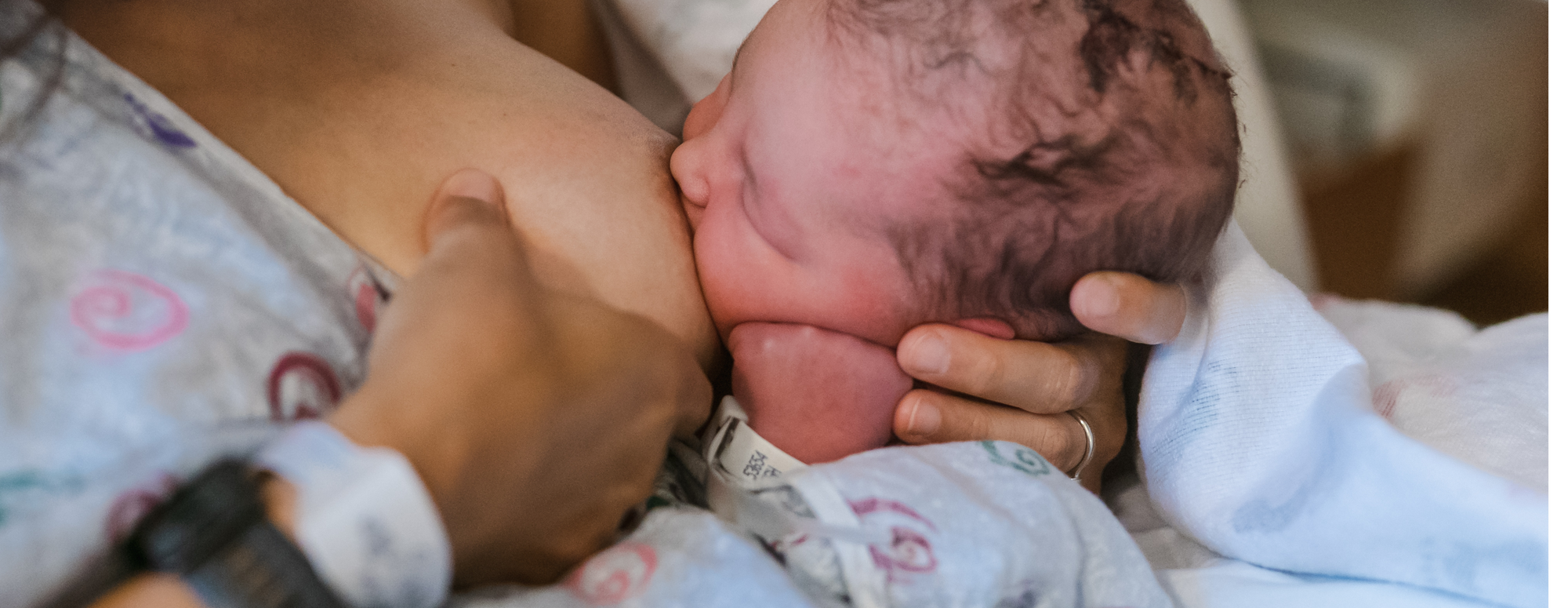Babies are born knowing how to feed – it’s a natural instinct. But if you’re breastfeeding with large nipples, it might take a little extra patience for your baby to get a good latch. That doesn’t mean it won’t work – it just may take some practice and the right support in the beginning.
You might be wondering if having bigger nipples will make breastfeeding harder. The good news is, breastfeeding with large nipples is possible! Sometimes it can bring a few extra challenges in the beginning, but with the right positioning and a few simple techniques, most moms and babies figure it out just fine. And of course, there are tricks to make things feel smoother for both you and your little one.

How to Breastfeed With Large Nipples
If you have extremely large nipples, knowing the right way to breastfeed is important. Your baby has the natural ability to feed unless they have sucking difficulties, which could complicate things.
The “U” Hold
When you’re holding your breast for a feed, try using a “U” hold (like in the picture). Just place your thumb or finger on top and let your other fingers support from underneath. Try not to press on the areola itself. This hold can be especially helpful if your nipples are on the larger or puffier side, or if your breasts feel heavy.
For women with very long, large, or puffy nipples, squishing the nipple down can make it easier for the baby to latch on during breastfeeding.

The Football Hold or Side-lying Position
Some moms with larger nipples find it really comfortable to nurse while lying down. The football hold or side-lying position can also make things easier. It’s worth trying out different positions to see what feels most natural for you and helps your baby latch best.
Breast Milk for Cracked Nipples
If you are experiencing soreness while breastfeeding, try expressing some milk after feeding and gently spreading it over the areola and nipple. This can provide immediate relief for cracked nipples.
Lanolin Cream
Pure lanolin cream can really help with sore nipples. It works by locking in moisture and creating a gentle barrier, which gives the skin a chance to heal and eases dryness or cracking. The nice thing is it’s safe for both you and your baby, so you don’t need to wash it off before feeds. The only time to avoid it is if you know you have an allergy to wool.
Nipple Shield
If latching with large nipples feels tricky, a nipple shield might be worth a try. Some moms find it gives their baby that little extra help to get started with breastfeeding.
How to Get Your Baby to Open Wide
Choosing To Pump Instead
Sometimes, if breastfeeding with large nipples feels too tricky, pumping and giving your baby breast milk in a bottle can be a really good option.
- Nutritional value: Your milk is perfectly made for your baby – full of the right vitamins, proteins, and fats, and much easier to digest than formula.
- Immunity boost: Breast milk also has antibodies that help protect your little one from common illnesses like diarrhea or chest infections. The longer your baby gets breast milk, the stronger their immune system becomes.
- Postpartum benefits for you: Pumping or breastfeeding also helps your uterus shrink back to its pre-pregnancy size a bit faster and can ease postpartum bleeding.
If you have larger nipples and run into challenges with latching, remember – it just takes patience and a bit of know-how. You don’t have to figure it out alone. Reaching out for support, whether it’s a breastfeeding class, a lactation consultant, or even a group of other moms, can make the journey so much smoother (and less overwhelming). With the right help, you and your baby can find a rhythm that works beautifully.
Resources
International breastfeeding support – La Leche League
Hackensackmeridianhealth.org – Can breasts be too large or too small to breastfeed?
Have you experienced any challenges with latching or breastfeeding with larger nipples? What helped you most? Leave your comment below…
FAQ
Not necessarily. While it can bring a few extra challenges at first, most moms with large nipples can breastfeed successfully. With the right positioning and patience, babies usually adapt well.
The football hold and side-lying position often work well because they give babies more control while latching. Some moms also find the “U” hold on the breast helps guide the nipple into the baby’s mouth.
You can try gently compressing the nipple into a “U” shape to make it easier for your baby to latch. Encouraging your baby to open wide before bringing them to the breast is also key.


